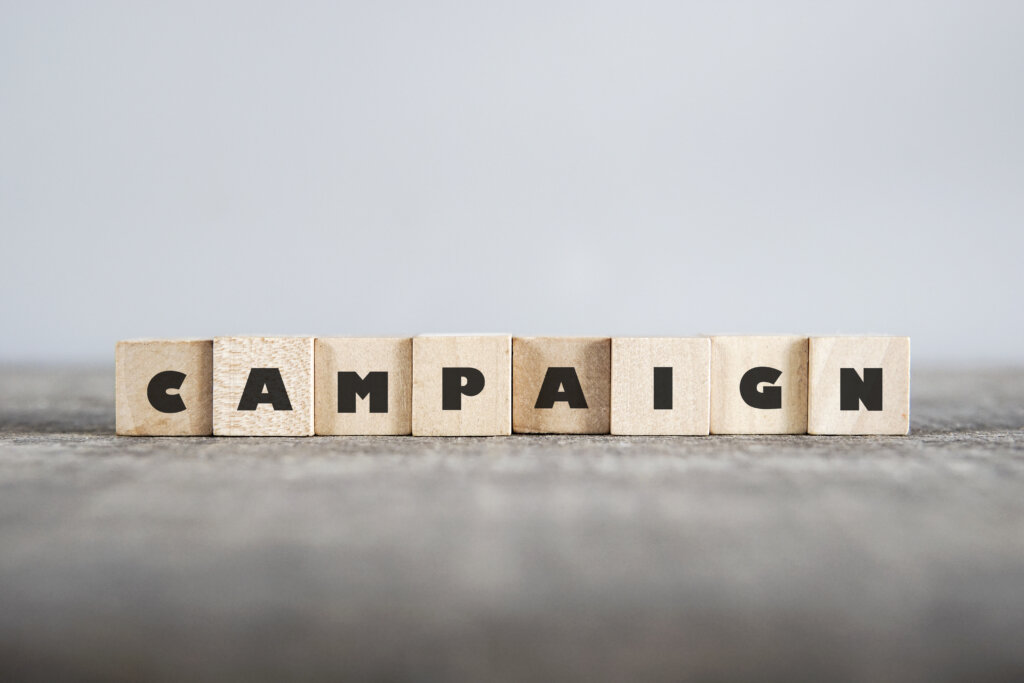Native advertising is a digital marketing technique blending promotional content with a platform’s user experience. It aims to resemble the appearance, sensation, and operation of the nearby content, resulting in a more immersive and less intrusive experience for the audience.
Different formats of native ads include sponsored articles, in-feed social media posts, and recommended content widgets. Native advertising, which can effectively engage users without disrupting their browsing experience, has become a crucial part of digital marketing.
Native advertising is becoming increasingly popular as traditional display ads have fewer clicks. It is considered a user-friendly alternative that can grab attention and boost engagement.
Marketers can use native advertising to build brand awareness, get more leads, and enhance customer loyalty by offering valuable content that resonates with their target audience.
As a result, native advertising has emerged as a robust tool for businesses looking to expand their reach and achieve better results from their digital marketing efforts.
Align your Content with the Platform
To get the most out of your native advertising campaigns, aligning your content with the platform where it will be displayed is important. Each platform has its unique look, feel, and purpose that you should consider when creating your ad.
1. Choose the right platform: Select a platform that aligns with your target audience and marketing objectives. Research users’ demographics, interests, and behaviors on various platforms to determine the best fit for your campaign.
2. Understand the audience: Study the platform’s user base to understand their preferences, needs, and expectations. Use this information to create content that resonates with the audience and drives engagement.
For example, if you’re placing an ad on a social media platform like Facebook, you should create content that appeals to the platform’s users and encourages them to take action.
Create Valuable and Engaging Content
Creating valuable and engaging content should be a top priority to capture the audience’s attention and drive engagement. Your native ad should provide useful information to the target audience while promoting your message or product.
Address audience pain points.
Understand your target audience’s problems and provide useful information to address these issues.
Use storytelling.
Use storytelling techniques to engage users and keep them interested in your content. Stories should be interesting, relevant, and entertaining to capture attention and drive engagement.
Optimize Headlines and Visuals
Optimizing headlines and visuals is essential for engaging your audience. Your headline should be clear, concise, and actionable to capture attention and compel users to click on your ad.
For visuals, choose an eye-catching image that complements the content of your native ad. Visuals should be high-resolution and optimized for mobile devices so they look sharp on any device. Additionally, consider adding animation to add layer of visual appeal.
It’s also important to include a clear call-to-action (CTA) in your native ad that compels users to take action by clicking through and interacting with the content. Ensure your CTA stands out using vivid colors, fonts, and other design elements.
Maintain Transparency and Credibility
Maintaining transparency and credibility is essential for creating successful native advertising campaigns.
1. Clearly label sponsored content: Make sure it’s obvious that it is sponsored and not an editorial piece. Use clear language to indicate the relationship between the advertiser and publisher.
2. Ensure accuracy of claims: Don’t make exaggerated or misleading statements when crafting sponsored content. Ensure that all information provided is factual and provide evidence for any claims made in the content.
3. Make sure the ad is relevant: Native ads should be relevant to the publisher’s audience and provide value to their readers. If it doesn’t provide any real benefit, it will likely be ignored or, worse yet, called out for its lack of relevance.
4. Provide multiple points of access: Links within native ads should be taken seriously. Provide multiple points of access that give readers the information they need to make an informed decision about whether or not to click through.
5. Respect user privacy: Follow all applicable privacy laws when collecting data on users who interact with native ads. Be transparent and honest about what data is collected and how it’s used.
By following these best practices, you can ensure your native advertising campaigns are successful and transparent for your audience.
Use Data-Driven Targeting
1. Utilize demographic and behavioral data: Leverage user data to target your native ads effectively. This includes age, location, interests, and browsing behavior, allowing you to reach the most relevant audience. By understanding your audience’s demographics and online behaviors, you can create tailored content that addresses their needs and choices, resulting in a more personalized and engaging experience.
2. Create audience segments: Segment your target audience based on specific criteria, such as demographics, interests, or past interactions with your brand. This enables you to develop customized content and messaging for each group, ensuring a more relevant and targeted approach to your native advertising campaign. Audience segmentation also allows you to allocate your marketing budget more efficiently, as you can prioritize high-value segments and optimize your ad spend accordingly.
Implement A/B Testing
A/B testing is an important part of any digital marketing campaign, and it applies to native advertising as well. A/B testing allows you to test different ad versions to determine which performs better. This includes testing different visuals, headlines and calls to action.
By running multiple tests and collecting data on the performance of each version, you can determine which ad is more effective with your target audience. This data can inform future decisions about your ad campaign and ensure you get the most out of it.
When running A/B tests, keep track of the results and compare them against each other after a given period. Also, consider using software to help you manage your testing and analyze the results to understand better which version performs best. This will save you time and ensure your efforts produce the desired results.
Optimize for Mobile Devices
It’s important to optimize your native ad campaigns for mobile devices. Mobile users increasingly engage with content on their phones, so you must ensure your ads display properly and look good on any device.
Ensure all images and visuals are optimized for mobile devices and the CTA is visible and easy to click on. Additionally, you may need to adjust the text and content so it is legible and easy to read on smaller screens.
Remember that mobile users are often in a hurry and don’t want to scroll or pinch-and-zoom to engage with your ad. Ensure all elements of your native ad campaign are easy to view and interact with on a mobile device.
Finally, ensure your native ad campaigns are designed to fit the specs of the channels they will appear in.
A campaign intended for social media platforms like Facebook or Instagram may need to be optimized differently than one that appears in-app. By optimizing your content for each platform, you can better ensure it is seen and interacted with by mobile users.
Monitor and Analyze Campaign Performance
Once you’ve launched your native ad campaigns, it’s important to monitor and analyze the performance of each. Track metrics such as clicks, views, conversions, engagements, etc., to identify which aspects of your campaign work well and which need improvement. This will help you refine and optimize your future campaigns for better results.
You should also monitor your campaigns in real-time to ensure you’re getting the desired results. Check for any unexpected changes or abnormalities, and adjust your targeting and budget accordingly.
Finally, review your campaigns in detail after they have concluded.
Analyze the performance of each individual ad unit, as well as how all of them worked together as a whole. This will help you determine what worked well and what didn’t so that you can create more effective campaigns in the future.
Leverage Influencer Partnerships
1. Choose the right influencers: Partner with influencers who align with your brand values, have a strong connection with your target audience and are genuinely interested in your products or services. By selecting influencers whose content and audience demographics match your campaign goals, you can amplify your native advertising efforts and reach a more engaged audience. Research potential influencers by evaluating their reach, engagement rates, content quality, and audience demographics to ensure they fit your brand well.
2. Collaborate on content creation: Work closely with influencers to create authentic, engaging content that resonates with their followers and promotes your brand effectively. Encourage influencers to incorporate their unique voice and perspective into the content, which will help maintain authenticity and foster trust with their audience.
By collaborating on content creation, you can ensure that your native ads align with the influencer’s style and tone, resulting in a more seamless and impactful integration of your promotional message. Involving influencers in the creative process can also lead to fresh ideas and innovative approaches to showcasing your brand.
Continuously Refine your Strategy
Native advertising is an ever-evolving field, so keeping up with the latest trends and tactics is important. Stay up to date on the newest targeting techniques, creative approaches, and optimization strategies.
Pay attention to what other brands are doing and experiment with different tactics. This will help you stay ahead of the competition and deliver the most effective native ads.
Additionally, monitor your campaigns closely and adjust based on performance data as needed. This will help refine your strategy and ensure you get the highest ROI from your native ad campaigns.
Finally, don’t forget to ask for feedback from your users. You can do this via surveys or polls to gain insight into what they like and don’t like about your ads. This will help you tailor your strategy further and improve your overall performance.
Final Thoughts
To elevate your native advertising campaign, remember to utilize data-driven targeting, monitor and analyze campaign performance, leverage influencer partnerships, and continuously refine your strategy. By incorporating these best practices, you can create engaging, relevant, and effective native ads that resonate with your target audience and drive desired results.
Now that you clearly understand the essential best practices for native advertising, it’s time to implement these strategies in your next campaign.
Start by setting clear KPIs, selecting influencers, and staying updated on industry trends. By doing so, you can maximize the potential of your native advertising efforts and achieve greater success in the competitive digital landscape.
Don’t wait – start elevating your native advertising campaigns today!
About The Author
Rehj
With over 15 years of experience in copywriting, Rehj has established a reputation as a highly skilled and talented wordsmith. Rehj has honed their craft throughout her career, consistently producing top-quality content for various audiences and industries.
Her ability to understand their target audience, craft compelling narratives, and write in a style that resonates with their audience has made them a sought-after copywriter in their field. Rehj’s passion for writing and commitment to producing top-notch content has driven their success and established them as a trusted voice in copywriting.







